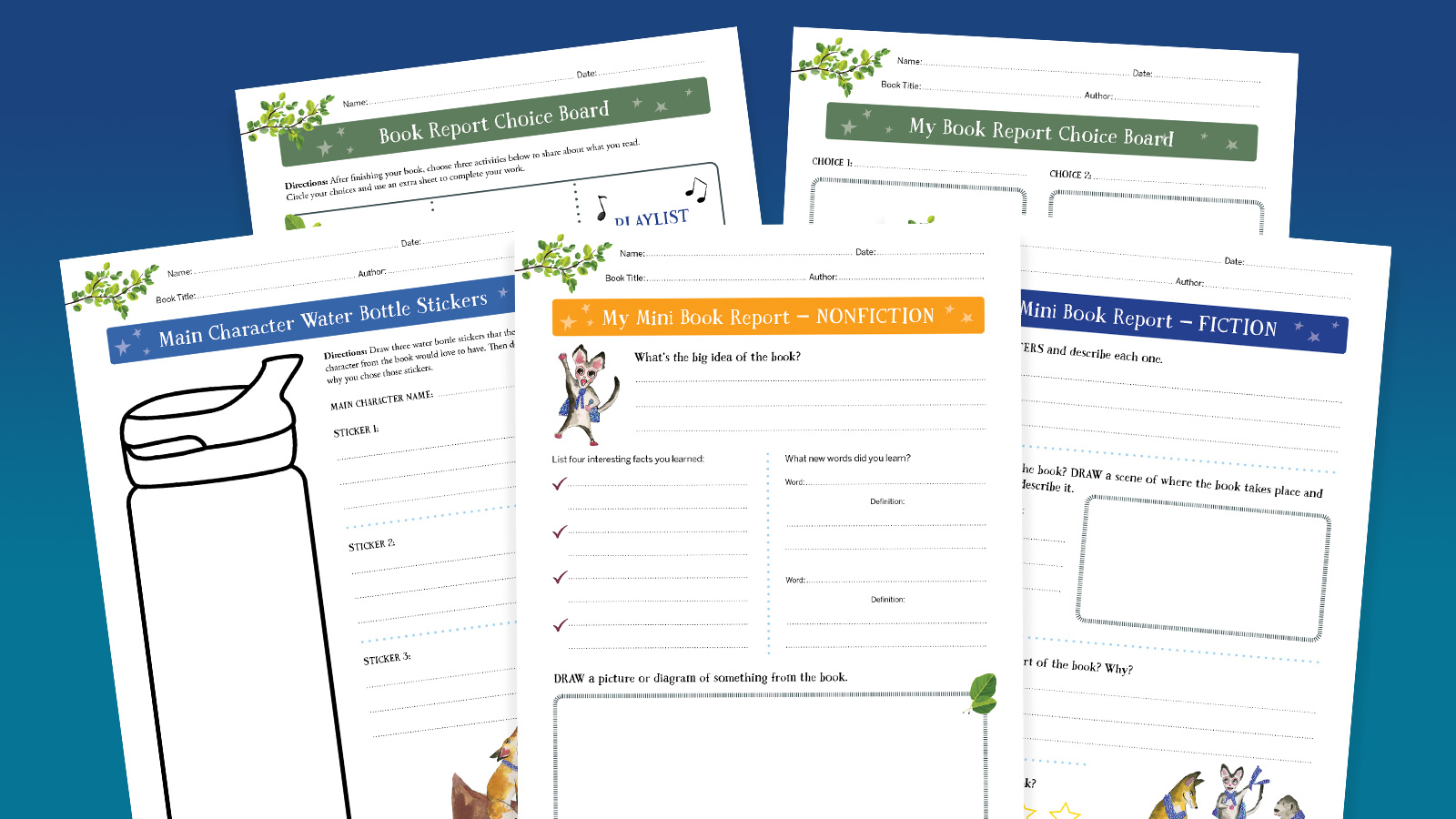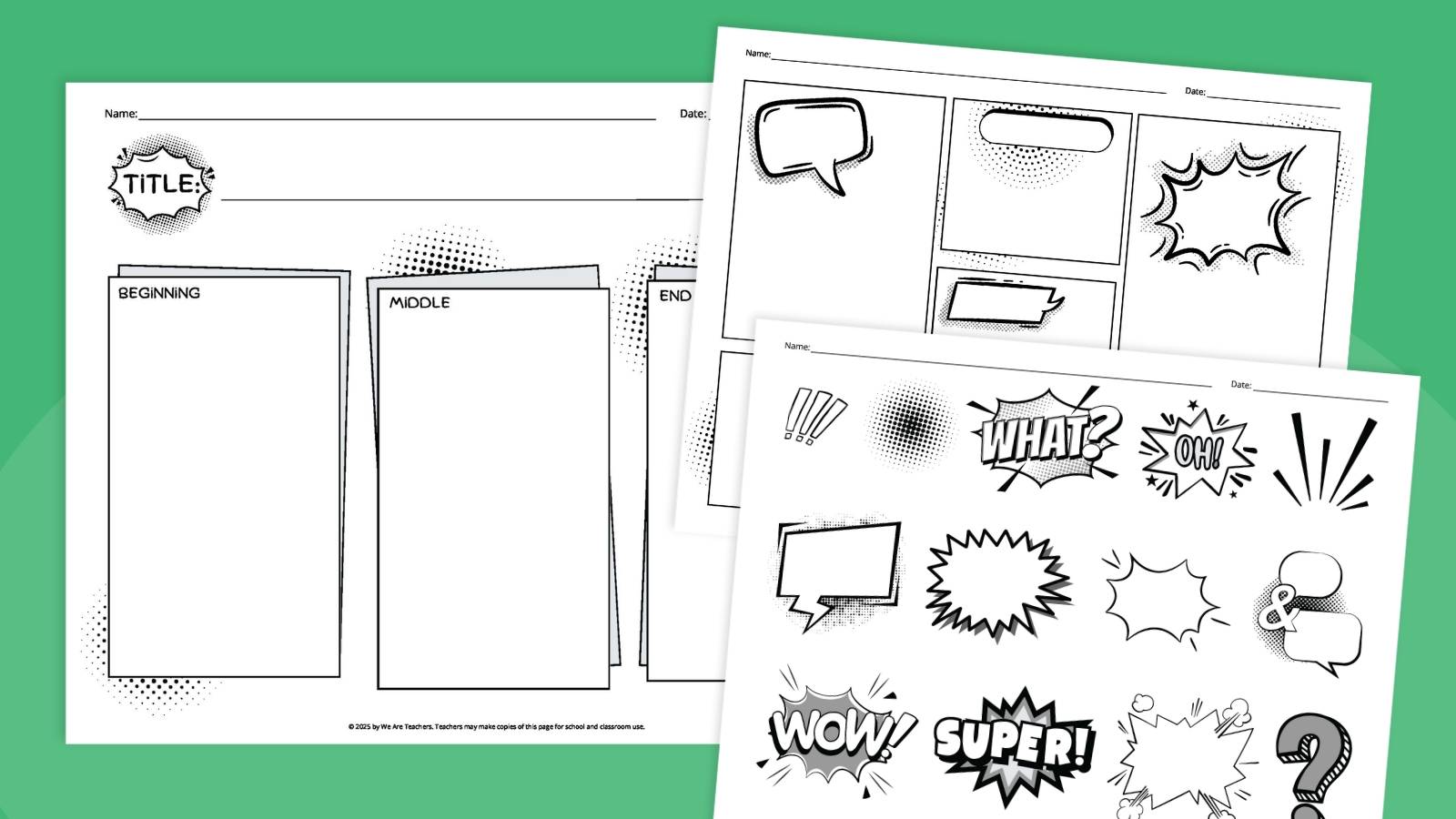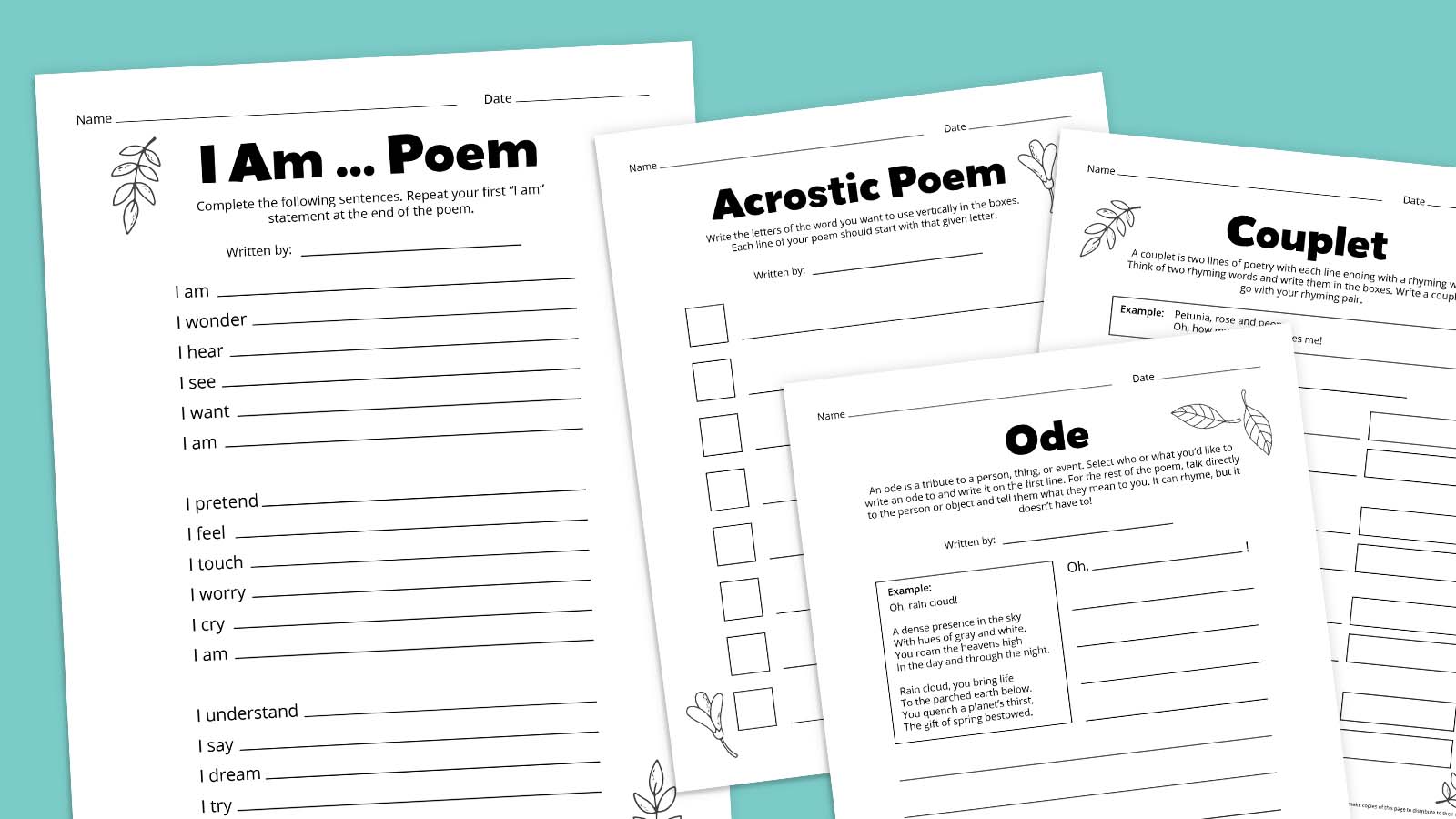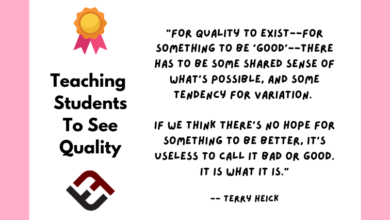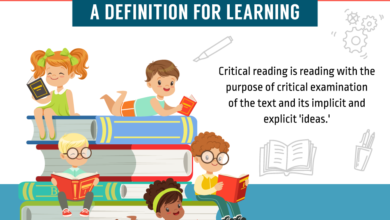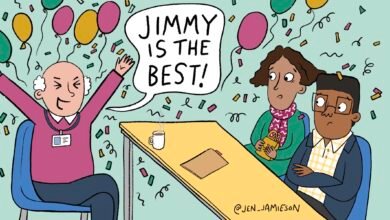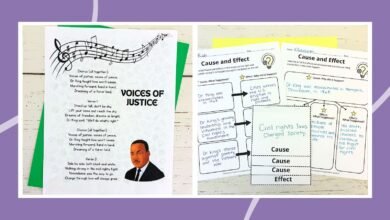40 Creative Book Report Ideas for Every Grade and Subject
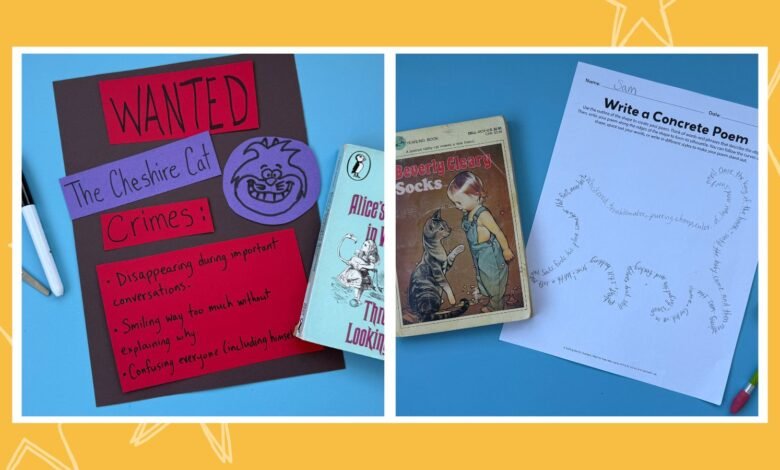
Responding to what you read is an important literacy skill. Reading about other people’s experiences and perspectives helps kids learn about the world. And although students don’t need to dive deeply into every single book they read, occasionally digging into characters, settings, and themes can help them learn to look beyond the prose. Here are 40 creative book report ideas designed to make reading more meaningful for kids.
1. Concrete poem
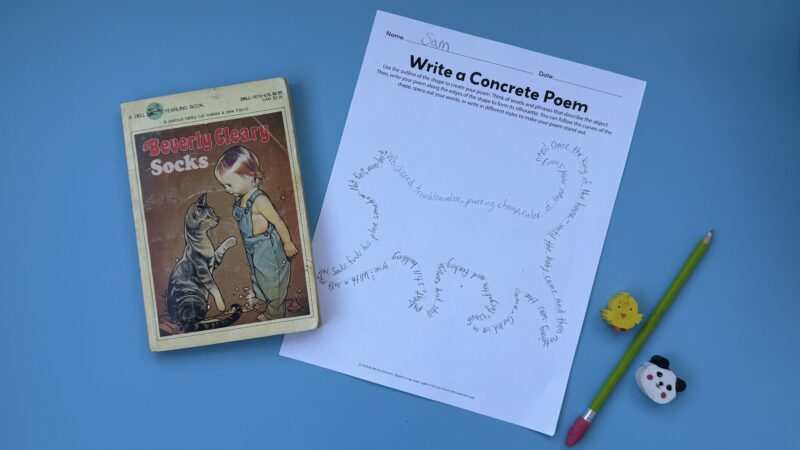
This clever activity is basically a “shape poem” made from words, phrases, and whole sentences found in whatever the student is reading. The words are laid out to create an image that represents something from the story. For example, if a student is reading a fairy tale about a princess, they may create a found poem using words from the story in the shape of a castle.
2. Graphic novel
Challenge your students to reimagine something they’re reading—a scene, a chapter, or a whole book—as a graphic novel. Provide a task list for the assignment. For instance, six scenes from the story, three characters, setting details, etc. And, of course, provide detailed illustrations.
3. BookSnaps

BookSnaps are digital, visual representations of a reader’s reflection on and insight into a book or other text. Students simply take a photo or screenshot of a page or passage, then add annotations, comments, illustrations, or other reactions. They are a great way to share personal connections and spark discussion.
4. Journal entry
Ask your students to place themselves in the shoes of one of their book’s characters and write a first-person diary entry from their perspective. Ask them to choose a critical moment in the story with plenty of interaction and emotion to talk about.
Learn more: Benefits of Journaling for Students
5. Pizza box book report
If you’re looking for creative book report ideas that use upcycled materials, try this one using a pizza box. It works well for both nonfiction and fiction book reports. On the inside of the top lid, students draw their book’s cover. On the bottom, they draw a circle and divide it into pizza slices. On each wedge, they tell a part of the story.
6. Book jacket
Challenge your students to think like a book illustrator and create a new, different book jacket for the text they’re reading. Make sure the jacket has an enticing front cover and a summary inside the front fold. On the back fold, provide a short biography of the author and on the back cover a few book reviews.
7. Rewrite the ending
Challenge students to come up with an alternate ending to the book they are reading. Write a summary of the story up to the point of the new ending, then take the story in a different direction.
8. Fictional yearbook entries
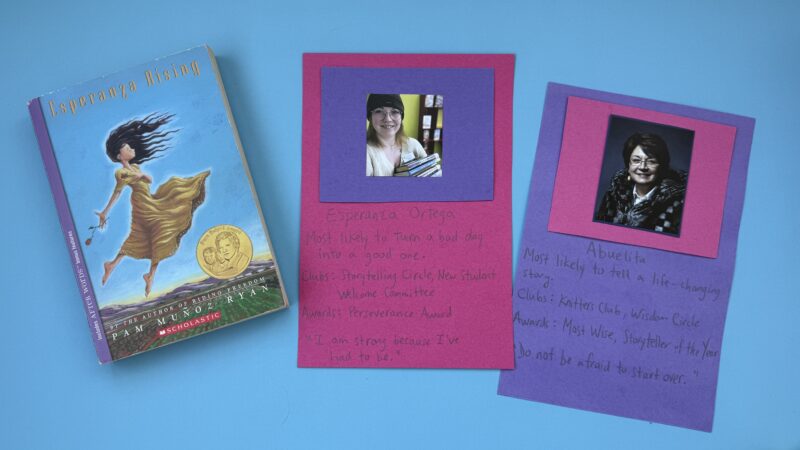
Have your students create a yearbook entry based on the characters and setting in their book. What do the characters look like? Cut out magazine pictures to serve as their school pictures. What kind of superlative might they get? Best-looking? Class clown? What clubs would they belong to or lead? What awards have they won? This fun assignment is a great opportunity for your students to dig deep into the characters’ personas.
Learn more: Clever Yearbook Ideas
9. Book tasting
How fun is this? Instead of a food tasting (or wine tasting for us adults), students can put on a book tasting. Set a lovely table, prepare the main dish (a book report from each student), and have students circulate and sample.
Learn more: Expand Your Readers’ Palettes With a Book Tasting
10. Water bottle sticker
Students are obsessed with stickers! In this unique activity, students will design water bottle stickers that the main character of the book would love to have, along with a short description of their choices.
11. Sandwich book report
Yum! You’ll notice a lot of creative book report ideas revolve around food. In this oldie but goodie, different-colored paper cut into appropriately sized shapes represent parts of a sandwich. For instance, tan for the bread, pink for ham, green for lettuce, red for tomato, etc. On each part of the sandwich, students will write about a different element of the book—characters, setting, conflict, etc.
12. Alphabet book
Have your students create their own alphabet book based on the book they read. After they find a word to represent each letter, have them write one sentence that explains where the word fits in.
Learn more: Best Alphabet Books for Kids of All Ages
13. Peekaboo book report
Using cardboard lap books (or small science report boards), students display details about their book’s main characters, plot, setting, conflict, resolution, etc. Then, they add a head and arms created from card stock and attach them to the board from behind to make it look like the main character is peeking over this book report.
14. Act the part
Have students dress up as their favorite character from the book and present an oral book report. If their favorite character is not the main character, retell the story from their point of view.
15. T-shirt book report
Another fun and creative idea: Create a wearable book report using Sharpie pens and acrylic paint on a plain white T-shirt. Include all the pertinent book report elements and add colorful illustrations. Have all your students wear their T-shirt book reports on the same day and give them time to share with one another.
16. Bookmark

Have students create a custom illustrated bookmark that includes drawings and words from either their favorite chapter or the entire book.
17. Rays of sunshine book report
This is great for biography research projects. Students cut out a photocopied image of their subject and glue it in the middle. Then, they draw lines from the image to the edges of the paper, like rays of sunshine, and fill in each section with information about the person. As a book report template, the center image could be a copy of the book cover, and each section would expand on key information such as character names, theme(s), conflict, resolution, etc.
18. Reading lists for characters
Ask your students to think about a character in their book. What kinds of books might that character like to read? Take them to the library to choose five books the character might have on their to-be-read list. Have them list the books and explain what each book might mean to the character. Post the to-be-read lists for others to see and choose from—there’s nothing like trying out a book character’s style when developing your own identity.
19. Character to-do list
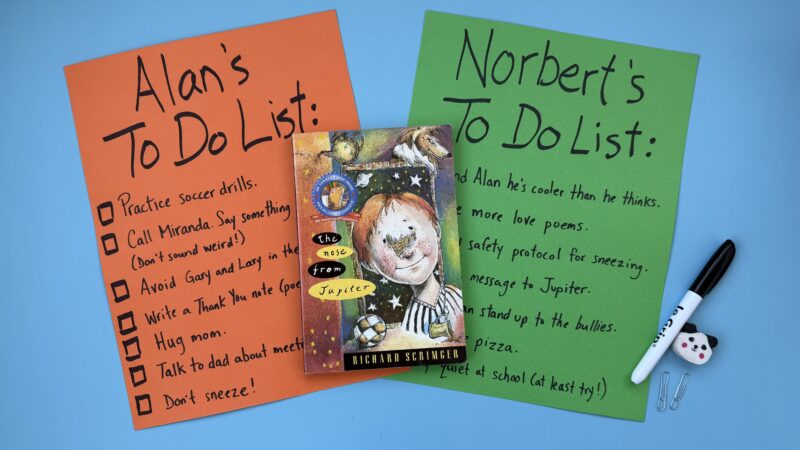
This fun activity is an off-the-beaten-path way to dive deep into character analysis. Get inside the head of the main character in a book and create a to-do list that they might write. Use actual information from the text, but also make inferences into what that character may wish to accomplish.
20. Collage
Create a collage using pictures and words that represent different parts of the book. Use old magazines or print pictures from the internet. Glue the pictures onto a piece of poster board and add text. Display student collages around the classroom and do a gallery walk.
21. Book reports in a bag

Looking for book report ideas that really encourage creative thinking? With book reports in a bag, students read a book and write a summary. Then, they decorate a paper grocery bag with a scene from the book, place five items that represent something from the book inside the bag, and present the bag to the class.
22. Timeline
Create a timeline using a long roll of butcher paper, a poster board, or index cards taped together. For each event on the timeline, write a brief description of what happens. Add pictures, clip art, word art, and symbols to make the timeline more lively and colorful.
23. File folder book report
Also called a lap book, this easy-to-make book report hits on all the major elements of a book study and gives students a chance to show what they know in a colorful way. Open a manila file folder flat, then fold each side into the center fold so that it looks like a French door. On each of the outside flaps and all of the inside area, have students create different boxes of information such as author, genre, setting, theme, etc. Students can use colored paper, markers, and crayons to make their report.
24. Map it

Create a colorful illustration map of the book’s setting and label all the important locations. This is an especially fun activity for tracking the action in mystery books.
25. Triorama book report
Who doesn’t love a multidimensional book report? A triorama is a three-dimensional triangular diorama, but you can also try an accordion-folded book report, a quadrama, or an info-sphere.
26. Character cards
Create trading cards (like baseball cards) for characters from the book. On the front side, draw an illustration of the character. On the back side, make a list of their character traits and include a quote or two. Give students time to share their cards with classmates or present them to the whole class.
27. Book report mobile
This creative project is easy to make with a wire clothes hanger, strings, and paper. Cover the body of the hanger with a paper illustration of the book cover. Then, fill out cards with key elements of the book like characters, setting, and summary, and attach them to the bottom wire of the hanger with string.
28. Top 10 fact sheet

Have students create a list of 10 facts that they learned from reading the book. Have them write the facts in complete sentences, and be sure that each fact is something that they didn’t know before they read the book.
29. Create a sequel
Have you ever finished a great book and wished the story would go on? Or wondered what happened to the characters 10 or 20 years later? This fun book report idea challenges students to take up where the author left off and follow up on the action and characters on their next adventure.
30. Be a character therapist
Many book plots revolve around a character’s fear and the work it takes to overcome that fear. Ask students to make like a therapist and identify a character’s fears. Have them find two or three scenes that illustrate how this fear exists. Then have them write about ways the character overcame the fear (or didn’t) in the story. What might the character have done differently?
31. Comic strips

If you’re looking for creative book report ideas for students who like graphic novels, try comic strip book reports. Include an illustrated cover with the title and author. The pages of the book should retell the story using dialogue and descriptions of the setting and characters. Of course, no comic book would be complete without copious illustrations and thought bubbles.
32. Charm bracelet book report
What a “charming” way to write a book report! Have students trace their hand and forearm onto a piece of stiff paper and then cut it out and decorate it. Next, add a strip of paper around the wrist as a bracelet. Finally, create “charms” that capture a character, an event in the plot, setting, or other detail to dangle from the bracelet.
33. Letter to the author
Have kids write a letter to the author of the book. Tell them three things you really liked about the story. Ask three questions about the plot, characters, or anything else you’re curious about.
34. Poems
Write a poem or song lyrics about the book. Be sure to include main themes, characters, and events that tell the story.
35. Board games
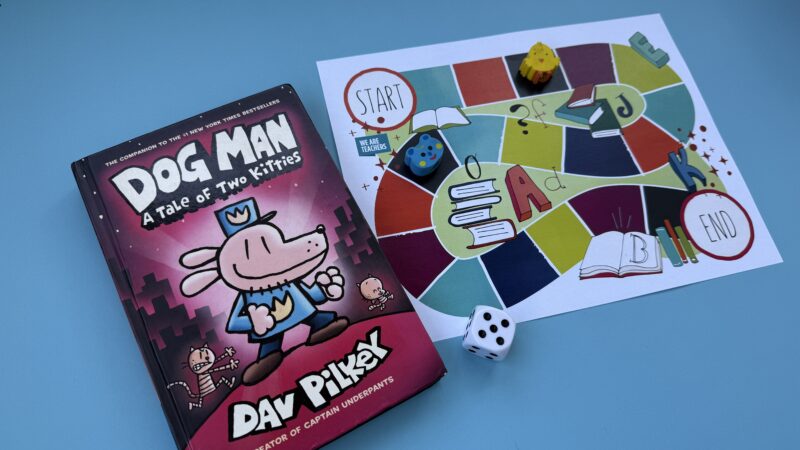
This is a great project to help your students develop deeper insight into what they’re reading. Check out our roundup of the best board games below and challenge students to adapt one to create an interactive book report using one of our free printable games boards.
Learn more: Best Board Games
36. Foldables
Create a brochure advertising the book you are reading. Begin by folding an 8 x 11 piece of paper lengthwise. Illustrate all four panels with enticing information about the book to demonstrate understanding. Have students set up a library of the brochures for classmates to browse through on their next book hunt.
Learn more: Writing Center Ideas We Love
37. Book-themed recipes
Food sometimes tells a story of its own, defining time, region, and history. Find or create a recipe related to the book’s setting, time period, or events, and explain its connection to the story.
38. Movie vs. book
If the book your students have read has been made into a movie, have them write a report about how the versions are alike and different. If the book has not been made into a movie, have them write a report telling how they would make it into a movie, using specific details from the book.
39. Wanted poster
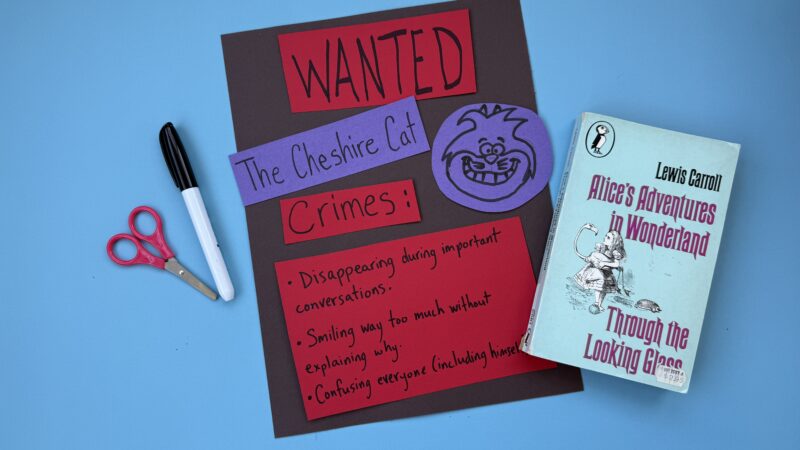
Make an old-timey Wanted poster for one of the book’s main characters. Indicate whether they are wanted dead or alive. Include an illustration of the character and a description of what the character is “wanted” for (with examples) as well a detailed account of where the character was last seen.
40. Wheaties box book report
Recycle a cereal box and create a book report to look like a classic Wheaties box that featured sports heroes. Include a main image on the front of the box. Decorate the sides of the box with information about the book’s characters, setting, plot, summary, etc.
Come share your own creative book report ideas in our We Are Teachers HELPLINE group on Facebook.
Plus, don’t miss 100 Famous Children’s Books Every Kid Should Read (Plus Free Printable).
Source link


